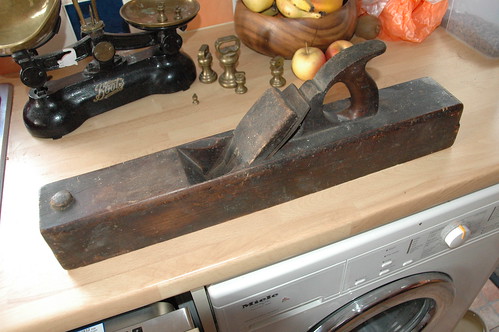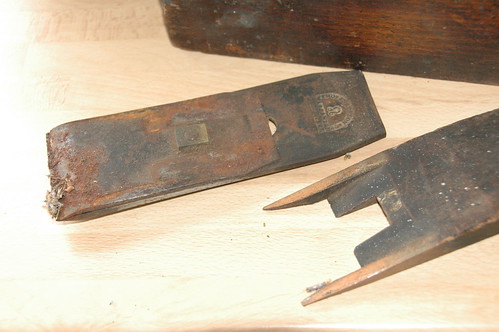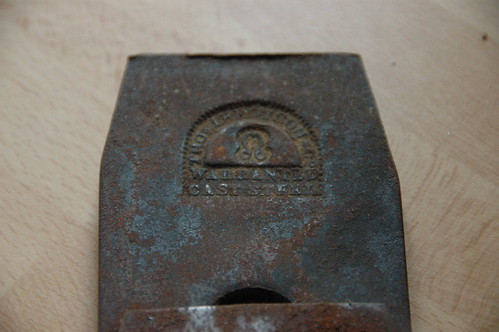StarGazer
Established Member
Just picked up an old wooden jointer plane, looks like a beech body, plane iron is a Thomas Ibbotson Warranted Cast Steel and has a simple chip breaker attached through a slot in the same manner as a more modern plane blade. Iron is nearly 4mm thick and has plenty of length remaining.
Other than the chip breaker the plane is perfectly normal, very well fitting beech wedge, strike button, carved tote.
The plane has been slightly abused in the past (top edge of wedge damaged with metal hammer and some minor splits) but should clean up to become a useful user plane. Sole is flat and true, mouth is not worn. A very heavy plane!
Last night I quickly stripped it down, cleaned up the worst of the cobwebs and separated and cleaned the iron and chip breaker, a brief sharpen and the plane took nice thin shavings off the edge of a knotty oak plank.
The blade was very hard to sharpen (compared to my stanleys and records), I really need to spend more time on the blade but the quick look has convinced me that the plane is a user.
The verbal history of the plane puts it at least 80 years old, although it may have been second hand even to that user judging by the name stamps.
Anyone know much about Thos. Ibbotson ?
Other than the chip breaker the plane is perfectly normal, very well fitting beech wedge, strike button, carved tote.
The plane has been slightly abused in the past (top edge of wedge damaged with metal hammer and some minor splits) but should clean up to become a useful user plane. Sole is flat and true, mouth is not worn. A very heavy plane!
Last night I quickly stripped it down, cleaned up the worst of the cobwebs and separated and cleaned the iron and chip breaker, a brief sharpen and the plane took nice thin shavings off the edge of a knotty oak plank.
The blade was very hard to sharpen (compared to my stanleys and records), I really need to spend more time on the blade but the quick look has convinced me that the plane is a user.
The verbal history of the plane puts it at least 80 years old, although it may have been second hand even to that user judging by the name stamps.
Anyone know much about Thos. Ibbotson ?







